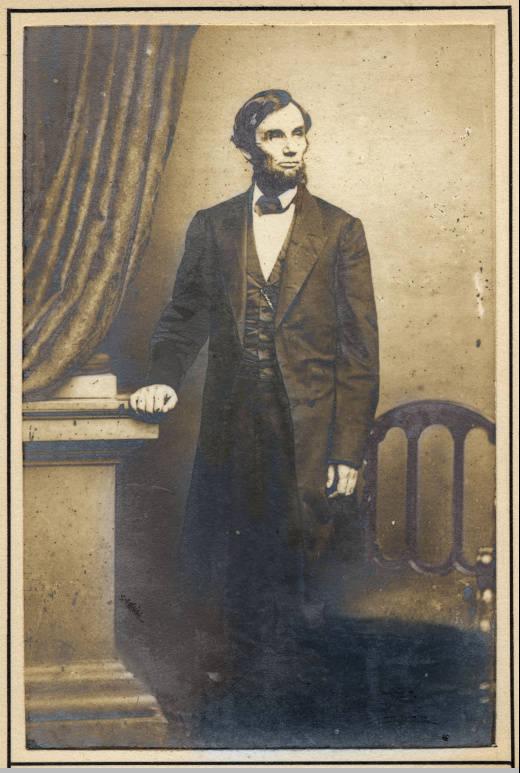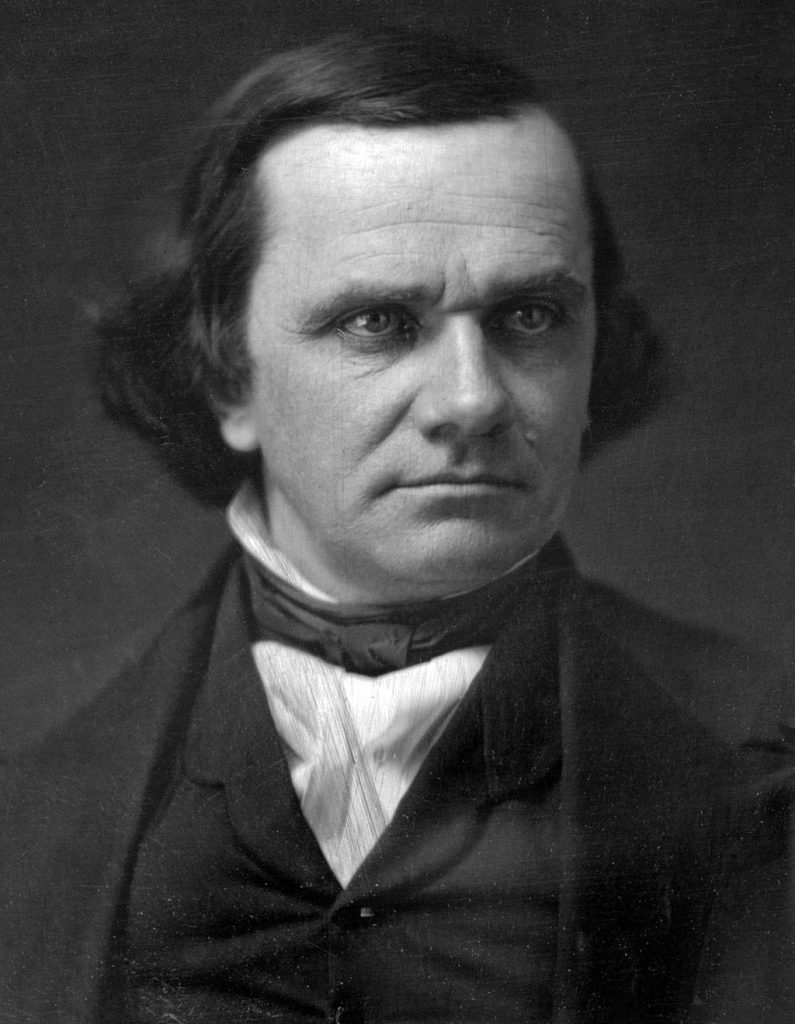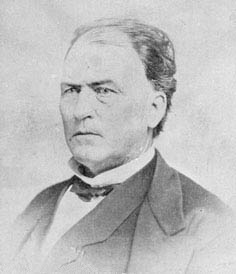As the state’s largest city, Indianapolis was the site of unprecedented political activity during the presidential campaign of 1860. With the in Indiana divided between supporters of Stephen Douglas and Hoosier Senator Jesse Bright, the six-year-old found itself better organized and at least as strong as its rival.

In 1860, Indiana was the sixth largest state in the Union. Because of its population size, both parties considered Indiana, along with Illinois and Pennsylvania, a “must-win” state. Carrying Indianapolis was viewed as a key to winning the state. The ensuing campaign was marked by innumerable torchlight parades, processions, speeches, and rallies in the capital city. The election engaged residents not only because of the high stakes brought by threats of disunion over slavery but also because the Republican candidate, Abraham Lincoln, had lived in the state as a youth.
Following the defeat of his attempts to block Douglas’ nomination at both the state and national Democratic conventions, Bright returned to Indianapolis in July and, in partnership with Indiana U.S. Democratic senator Graham Newell Fitch, began publication of a triweekly paper, , which quickly became known for being more anti-Douglas than anti-Lincoln.

That same summer the Republican leadership engaged the services of former German revolutionary and prominent Republican Carl Schurz to stump the state for German voters in the belief that the outcome of the election might depend on Indiana’s German population. The Republican national committee paid his fee, and as part of his tour of Indiana, Schurz gave a German language speech to a packed Metropolitan Hall in Indianapolis. He enthusiastically endorsed Lincoln before being escorted to his train by a group of 200 uniformed campaign workers known as “‘Wide Awakes.”
On August 29, the Republicans held a statewide rally in Indianapolis featuring a mammoth parade, an afternoon of political speeches, and an evening torchlight parade. The events drew an estimated 50,000 people, almost three times the city’s population. A chief attraction in the parade was a large wagon filled with “pioneers” doing various tasks and drawn by 43 yokes of flag-decorated oxen, the whole outfit stretching more than 400 feet. The speeches in featured Republican notables from Indiana, Ohio, Missouri, Kentucky, and Virginia, speaking from four stands to large crowds. The torchlight parade of an estimated 5,000 torchbearers likewise drew enthusiastic throngs.

On September 28, in a statewide rally that was comparable to the one held by Republicans, people jammed the sidewalks to watch the colorful parade of numerous floats, bands, and marching groups that escorted the featured speakers of the day, Stephen Douglas and his vice-presidential nominee, Herschel V. Johnson, to the Old . There they spoke to an estimated 25,000 cheering Democrats. Downtown streets were lined that evening for the rally’s climactic torchlight parade.
While he had the support of most Northern Democrats, the party fragmented for the election. Southern Democrats supported former U.S. vice president John C. Breckenridge of Kentucky, and John Bell, a Tennessee slaveholder, was the candidate of the Constitutional Union Party, made up of disgruntled Democrats and former Whigs who took no official position on slavery and states’ rights.
Members of the Constitutional Union Party stated that they would defend the Constitution and the Union. Bell, however, supported the extension of the Missouri Compromise line across the U.S. to make slavery legal in new states south of the line and illegal in new states north of the line.
Following the Republican sweep of the state elections held in October, the outcome of the presidential election in November offered no surprises. Lincoln carried the state of Indiana with 139,033 votes to Douglas’ 115,509, with an additional 12,294 votes going to Breckenridge and 5,306 to Bell. In Marion County, Lincoln won with 5,024 votes to Douglas’ 3,252, while Breckenridge received 318 and Bell won only 161 votes.

Help improve this entry
Contribute information, offer corrections, suggest images.
You can also recommend new entries related to this topic.